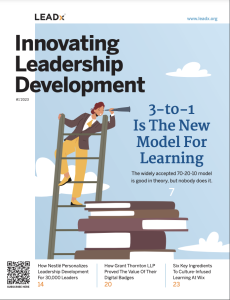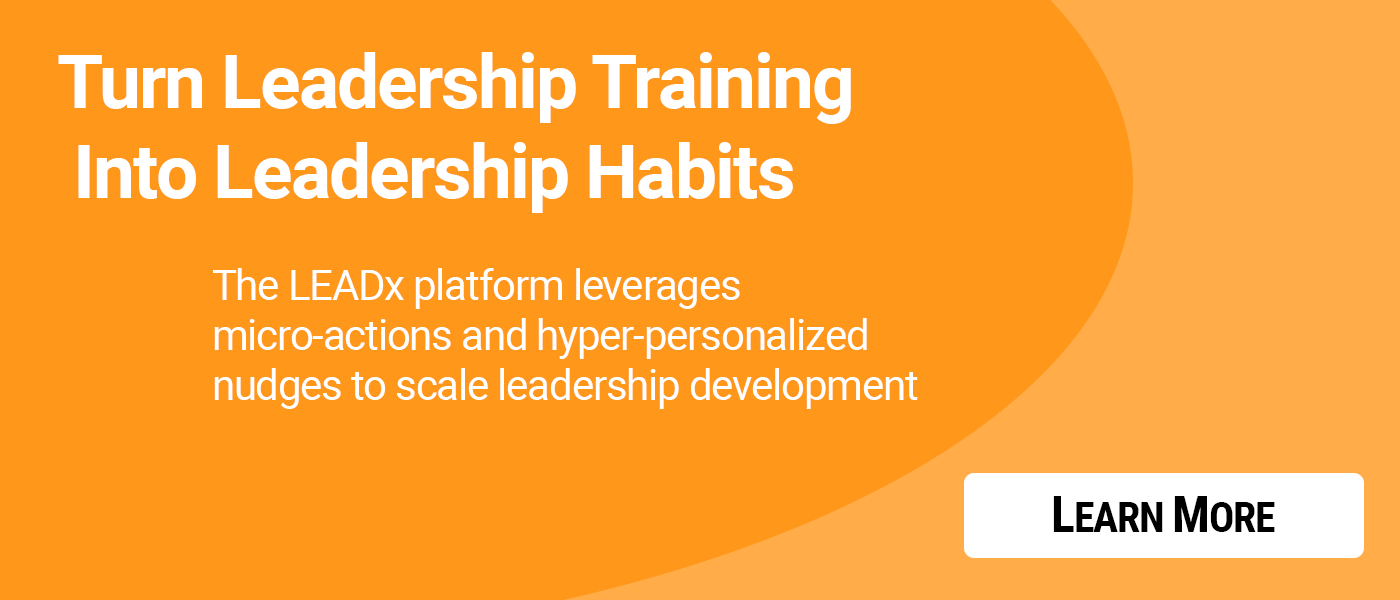
The 70-20-10 learning model is widely accepted as one of the best frameworks for corporate learning and development. The 40-year-old model suggests that people should acquire 70% of new knowledge from on-the-job experiences; 20% from interacting with peers; and 10% from formal education—like classroom and Zoom lectures. The ratios make sense on paper, seeing that “learning by doing” is the most effective way to apply and habituate new skills.
70-20-10 Is Good Theory, But Nobody Does It
There’s just one problem. The 70-20-10 model is aspirational, but it’s not being implemented. The Association for Talent Development concedes that on-the-job learning is difficult to track and measure. In its 2020 State of the Industry survey, ATD asked participants to rate the extent to which their organization emphasized on-the-job learning. Almost half of organizations surveyed do not emphasize on-the-job learning to a high extent.
Ask any director of learning and development to show the allocation of their budget and focus, and they’ll show you that the vast majority is focused on formal education (the category that is supposed to be 10%). They sweat the details of the curriculum, the delivery format, how to move classroom instruction into Zoom, how to do role-plays during the program.
But very little thought and support are given to what happens back on the job; not a lot of effort or tracking is put into the “pull-through” elements, the application elements, of skill development. It’s no wonder the dreaded “knowing-doing” gap continues to plague our industry.
A Better Model for Learning: 3-to-1
My humble suggestion is that we replace the 70-20-10 model with something I call the 3-to-1 learning model. It’s a simple, actionable model: for every one formal learning event, you should design and facilitate three on-the-job application exercises.
For example, let’s say you want your managers to do a better job of giving effective feedback. Your “curriculum” would become an action learning journey like:
- Week 1: Live workshop to learn and practice an effective feedback framework. For example, a facilitator could teach the B.I.G. model of feedback (Behavior, Impact, Get Agreement).
- Week 2: Participants would ask their team members to give them feedback (supporting materials could include model emails, discussion guides, a job aid on how to receive feedback)
- Week 3: Participants would give their team members feedback – but only positive feedback.
- Week 4: Participants would give constructive feedback as appropriate. If they see something, they’ll say something.
Ideally during weeks two through four, rather than suggesting these application activities as suggested reinforcement activities, the L&D team would treat this time as more important than week one. They might:
- ask for feedback activities to be scheduled
- ask to be cc’d on email communications related to the activities
- require participants to fill out reflection worksheets (what went well, what didn’t, what questions do they have about what happened)
- hold followup coaching conversations
A Shift In Focus
While the 3-to-1 model seems simple, it’s a large shift in mindset. Learning and development professionals should re-imagine their role. Shift your focus:
- from knowledge transfer to behavior change
- from instructional design to habit design
- from learning to application
- from activity metrics to behavior change metrics
In brief, it’s time to put the 40-year-old 70-20-10 model behind us. A simpler 3-to-1 model is actionable and effective.







